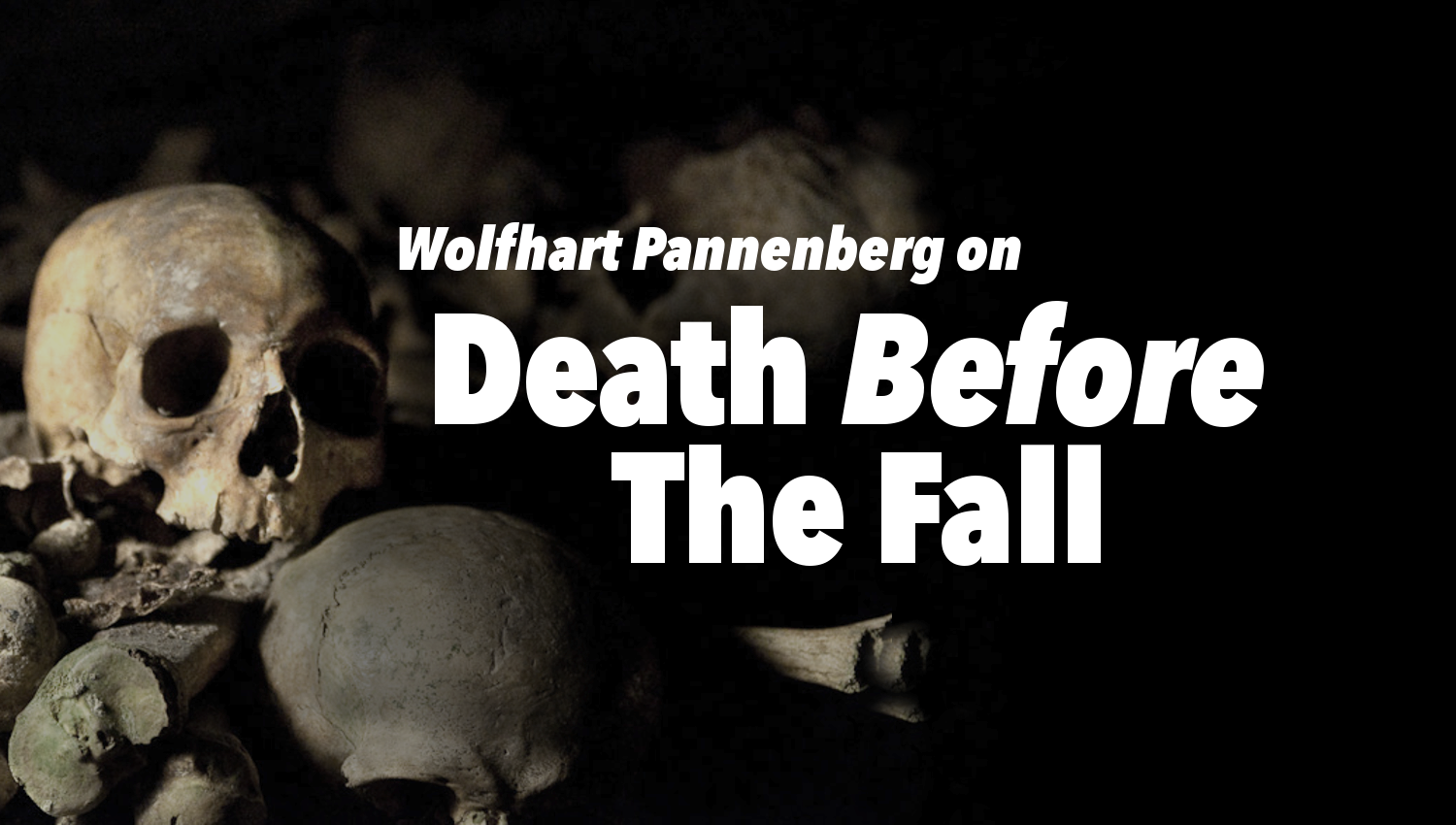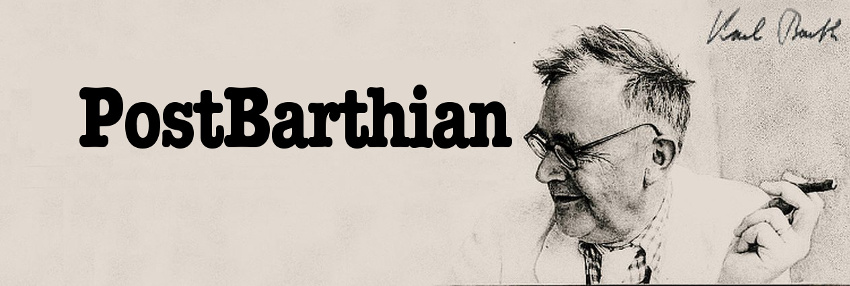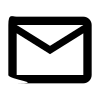 Wolfhart Pannenberg (1928-2014) argued that there was death before the Fall of humanity described in the Creation Stories (Gen 1-3). Pannenberg's explanation of death in prehuman history enables us to better understand the Doctrine of Creation, and how evolutionary sciences may be interpreted in respect to it, and how to understand the occurrence of evil, suffering and death that has been prevailant throughout the Cosmos since the beginning of the world. In this post, I've explained why Pannenberg says that there was death before the fall with a ten point list summarizing why the Doctrine of Creation includes death before the Fall, and also included four quotations as background sources from Pannenberg's Systematic Theology, Vol. 2.
Wolfhart Pannenberg (1928-2014) argued that there was death before the Fall of humanity described in the Creation Stories (Gen 1-3). Pannenberg's explanation of death in prehuman history enables us to better understand the Doctrine of Creation, and how evolutionary sciences may be interpreted in respect to it, and how to understand the occurrence of evil, suffering and death that has been prevailant throughout the Cosmos since the beginning of the world. In this post, I've explained why Pannenberg says that there was death before the fall with a ten point list summarizing why the Doctrine of Creation includes death before the Fall, and also included four quotations as background sources from Pannenberg's Systematic Theology, Vol. 2.
Ten Reasons Why There Was Death Before the Fall of Humanity
1. Scriptures teach that all humanity dies as a result of sin (Rom 5:22f.), but there was death before the Fall of humanity (Gen 2-3).
2. Theologically, the belief that God did not create death originates from the deuterocanonical literature (e.g. Wisdom of Solomon), and is not biblical theology (e.g. from books generally recognized as canonical).
3. The renewal of life for pleasure, joy and nourishment requires death and suffering of other organisms in the competition for resources, and even the Genesis Creation stories (Gen 2:15-17) describes Adam's life being sustained by eating the flora in the Garden of Eden (including the Tree of Life).
4. Something "analogous to death" has prevailed throughout creation since the very beginning of the cosmos, due to the finitude of all creatures. For example, multiplicity of the phenomena of multi-celled organism life is not possible apart from the death of other multi-celled organisms. And death is necessary to make way for future generations. "Individual death is a condition of the continually self-renewing multiplicity of the phenomena of life. "
5. Pannenberg believed (contra Karl Barth) that death is not a good and natural part of finite creaturely existence. Instead, the occurrence of death in all finite creatures is in connection to sin—this link between sin and death has a prehuman history, that culminated in the sin of humanity in the Fall. "As distinct from the finitude of creaturely existence, death is part of God's creation only in connection with sin"
6. The existence of increasing entropy (i.e. the Second Law of Thermodynamics) is evidence that the whole cosmos is under the tyranny of ungodly, demonic powers in the world (e.g. the Prince of this World), from the very beginning of creation. "According to the NT witness the world as a whole has come indeed under the tyranny of an ungodly force, the prince of this world (Rom 8:20,22), gives us cause to reckon with the dominion of a destructive power of this nature."
7. Evil, suffering and death originates in finite creatures as they seek self-autonomy in the natural world. As creatures assert themselves over and against others, they deny their dependance upon God the Creator, the has climaxed in the sin of humanity in the Fall. This is scientific observable in natural processes that appear autonomous and hide the fact that their origin is in God the Creator.
8. Pannenberg says the ungodly and demonic powers at work in the natural world are not autonomous, but remain to be under the control of God (pace. the Book of Job).
9. The Holy Spirit and Angels are also forces that are at work in nature, so not all forces in nature are benign or demonic (c.f. Pannenberg's angelology). The Holy Spirit is specifically at work in the original of life through continuous creation.
10. Pannenberg's disconnecting creaturely finitude from death, allows for a futuristic eschatology, where finite creatures (including humanity) may participate in the Eternal Life of God, without their functional extinction (contra Karl Barth's belief that the future coming of Jesus will result in the end of all creaturely activity).
Four Pannenberg Quotations on Death Before the Fall
I've selected four quotations from Wolfhart Pannenberg's Systematic Theology, Vol. 2 to provide background and sources that explain why there was death before the Fall of humanity.
In the first quotation, Pannenberg describes death as a result of finite creaturely existence, because all life lives off the death of other life, and living things must die in order to make room for the renewal of life through future generations:
This elucidation of the concept of death as the consequence of sin brings to light, however, the full strength of the objection that can be made against the concept. For death seems to be an ineluctable consequence of our finitude, not our sin. All multiple-cell life must die. It is not just that organisms age and wear out. They also must make way for future generations. Life cannot go on without the death of individuals. This is true in human history as well. Individual death is a condition of the continually self-renewing multiplicity of the phenomena of life. [1]
In this second quotation, Pannenberg explains that death is part of creation, but only in connection to sin. All living things are under the burden of corruption, by divine decree and through natural processes in the world. The idea that God did not create death has crept into popular theology from extra-biblical sources, so there's no reason to think that death only came into existence after the Fall of humanity. From the beginning of creation, evil and suffering has existed, due to demonic and dynamic forces at work in the prehuman history of the world, that culminated in the sin of humanity.
As distinct from the finitude of creaturely existence, death is part of God's creation only in connection with sin. The Wisdom of Solomon says categorically that God did not create death (1:31). Theology, of course, must recognize something analogous to death throughout creation, for all living things stands under the burden of corruptibility (Rom 8:20ff). Like human sin, the link between sin and death has a prehuman history. In this history a demonic dynamic seems to have developed over humanity. [2]
The third quotation continues to explain how the evil and suffering that has existence since the beginning of creation is linked to demonic and ungodly forces, that are adversaries to God the Creator, yet remain under the control of God.
The temporal inversion in the structure of natural forces and their operation causes them to become ungodly and demonic forces only when they close themselves against the future of God, the kingdom of his possibilities, and thus become closed systems. It could well be that world occurrence is at least partially under the influence of such power centers. According to the NT witness the world as a whole has come indeed under the tyranny of an ungodly force, the prince of this world (Rom 8:20,22), gives us cause to reckon with the dominion of a destructive power of this nature.
If the principle of the increase of entropy in the cosmic process gives evidence of this power or its operation, we also see that even this destructive force is still to be understood as a servant of God (Job 1:6) and his will as Creator, though it encounters us as the adversary of God. At any rate, no destructive power is the only determinative ground of the creaturely reality in which it holds sway. Through all other powers and fields of force may be seen also the working of the divine Spirit as the origin of life in the creatures. [3]
The fourth quotation explains the previous three quotations, by explain how the interdependence of all living things relates to creaturely finitude, death, evil, suffering, sin, nourshiment, pleasure and joy, throughout the prehuman history of the world, that climaxed in the fall of humanity as described by the Genesis Creation stories and in the New Testament (c.f Rom 5:22f):
The fact that the interdependence of creatures is part of the finitude of existence makes this situation even more acute. Creatures live off and for one another. They build on the existence of others, and others build on them. In the realm of organisms there is also strife for access to the sources of life, competition for nourishment and pleasure in which each maintains itself at the expense of others, even to the point of killing and eating them. The suffering of corruptibility that affects all living things, and that forms the background even to joy in life, culminates in the suffering that others add to it.
Like pain and suffering, evil is possible because of the finitude of existence, and especially of living creatures that seek to maintain themselves autonomously and thus incline to aim at a radical independence. Here is the origin of both suffering and evil.
Asserting themselves against one another, creatures do so also against the Creator. We see this on the ascending line of forms of life, and it comes to a climax in human sin, for among us the relation to God has become thematic. For the autonomous creature self-independence conceals dependence on God, just as for the scientific observer the autonomy of natural processes hides their origin in God. At the same time, the results of creaturely autonomy in the form of suffering and iniquity seem to refute belief in a good Creator of this world. We have here two aspects of one and the same fact. [4]
Sources:
1. Pannenberg, Wolfhart. Systematic Theology (Volume 2). trans. Geoffrey W. Bromiley, Wm. B. Eerdmans Publishing Co., 2001, pp. 271. [Bold has been added to the quotation for emphasis]
2. Ibid. 274. [Bold has been added to the quotation for emphasis]
3. Ibid. 108-9. [Bold and a line break has been added to the quotation for emphasis and readability]
4. Ibid. 172-3. [Bold has been added to the quotation for emphasis]
Header background: By Joshua Veitch-Michaelis from Leamington Spa, England (Les Catacombes, Skulls) [CC BY-SA 2.0], via Wikimedia Commons



October 3rd, 2018 - 14:14
Very good. Thanks for the nice refresher on Pannenberg’s views on this — it is very well summarized.
October 3rd, 2018 - 14:18
Thanks! Glad you enjoyed it.